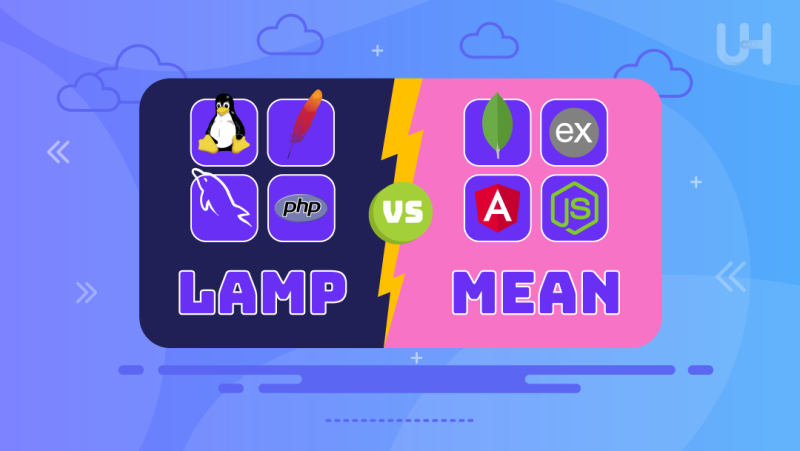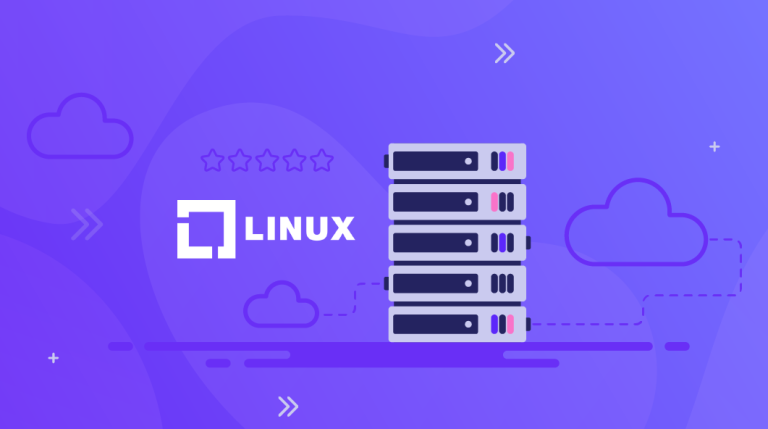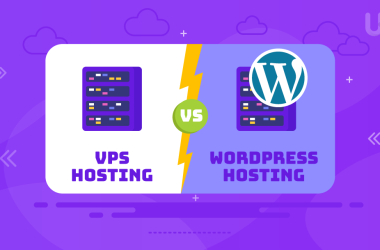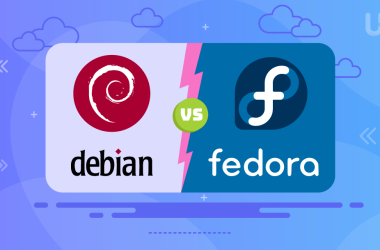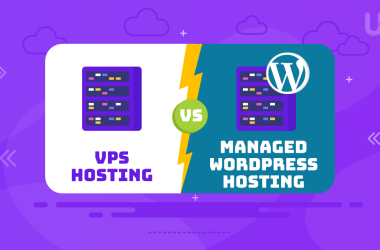The choice of technology stack in web application development is crucial since this issue affects performance and scalability. When comparing LAMP vs MEAN, both stacks offer unique advantages tailored to different types of projects. Choosing the right stack can be quite complex since it mainly revolves around your needs, your team’s proficiency, and future scalability.
In this article, we will compare LAMP vs MEAN, listing the differences, pros, and cons of each. By the end, you will better understand which stack best suits your project goals and technical preferences, making your decision easier.
What is LAMP?
One of the most popular open-source technology stacks for web development is the LAMP stack. At its core, it comprises four components: an operating system like Linux provides stability and security; Apache works as the web server, handling HTTP requests and responding to Web pages.
MySQL is the relational database management system the designer chooses to create, maintain, and manipulate the data. Lastly, PHP, one of the most functional scripting languages, powers up the dynamic content of web applications. All these together make for a reliable stack that has enjoyed wide adoption for the development of dynamic websites and applications, offering flexibility and ease of use for developers across various industries.
Pros
- Free and Open-Source: All elements of LAMP can be used free of cost, hence reducing development costs and making it accessible for a wide range of projects.
- Stable and Reliable: It has been in use for decades and provides stability through its robust performance in web applications.
- Flexibility: It can be used on anything from a simple website to large, complex, and dynamic platforms.
- Large community support: With its long history, LAMP commands a huge user base into whose contribution one may find extensive documentation and community-driven solutions.
- Interoperability: The stack runs on various operating systems, making it versatile for the developer.
Cons
- Not scaling enough: Compared to modern stacks like MEAN, the architecture in LAMP will not scale well for very large-scale applications.
- Outdated components: Some feel that technologies such as PHP are outdated and not as powerful or modern as Node.js in the MEAN stack.
- Performance Bottleneck: MySQL is a relational database; it may slow down at times if it is used to store huge data sets or process complicated queries.
- Less suited for real-time applications: LAMP is not optimized for real-time features, such as instant messaging used in modern apps.
- Tight architecture: Changes in one constituent might affect others, making the stackless modular and thus cumbersome to update.
What is MEAN?
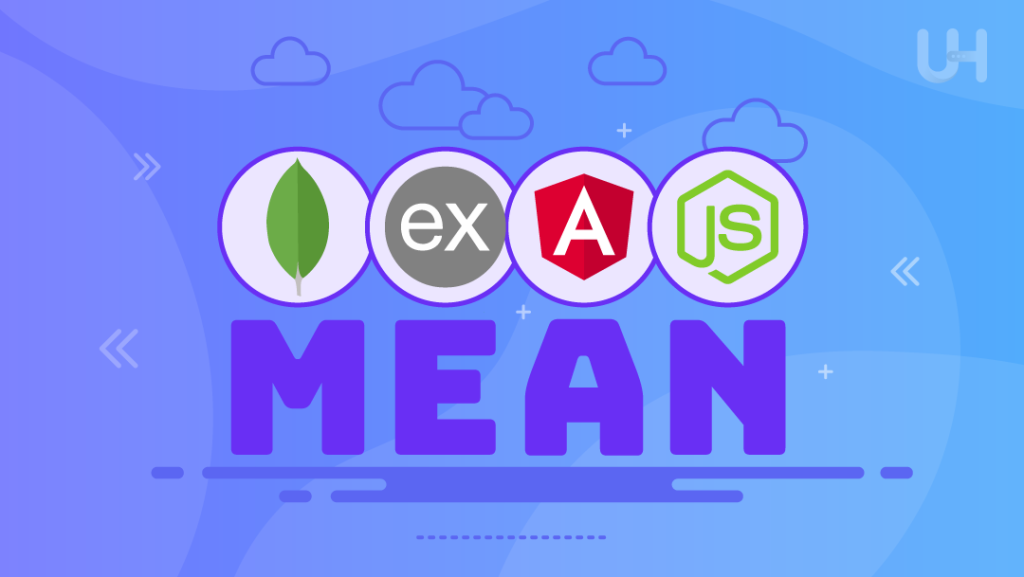
MEAN stack is a modern web developing stack that comprises MongoDB, Express.js, Angular, and Node.js. MongoDB is a NoSQL database version that allows data storage flexibility using a JSON-like format. Express.js is a lightweight framework for Node.js that gives developers an easy way to build robust web applications.
Angular is a Google-developed frontend framework for creating dynamic user interfaces. Node.js serves as the runtime environment, granting the ability to run JavaScript on the server side. This stack is purely based on JavaScript; hence, it is ideal for developers who want to stick to one language between the front end and back end to make the workflow more efficient.
Pros
- Full JavaScript stack: MEAN uses JavaScript for both front-end and back-end development, which makes life easier for developers across the entire application.
- Highly scalable: MongoDB’s NoSQL structure scales horizontally, making MEAN suitable for large, complex data sets.
- Asynchronous and fast: Node.js provides a non-blocking architecture that is quite performant for real-time applications.
- Active community support: MEAN is a rapidly growing, vibrant community that’s supported by improvements, frameworks, and tools.
- Single-page applications: Angular was designed for Single-Page Applications (SPAs), meaning it offers fluid and dynamic experiences for users without refreshes to other different pages.
Cons
- Steep learning curve: It requires proficiency in MEAN technologies like JavaScript, Angular, and Node.js, which can be quite difficult for a fresher to learn.
- Less Mature: MEAN is relatively younger compared to LAMP, and some developers feel its ecosystem isn’t as mature, with fewer resources.
- Not suitable for relational data: MongoDB is a NoSQL database not suitable for projects with complex relational data models.
- Callback Issues: While Node.js is generally speedy in its practice, if not applied properly, applications with a lot of functionality may also run into issues with callback, which can make the code base hard to administer.
- Limited flexibility: MEAN is highly focused on JavaScript, which may impede developers who would want to apply other languages or technologies.
Reliable PHP Hosting for Your LAMP Stack Projects
To power your LAMP-based projects with reliable performance, consider UltaHost’s PHP Hosting. Offering speed, security, and full support for PHP, it’s an ideal solution for building dynamic websites and applications using the trusted LAMP stack.
MEAN vs LAMP: Differences
In comparing LAMP vs MEAN, it becomes important to define how each of these stacks performs and caters to different needs that come with projects. LAMP is a traditional architecture, mostly focused on stability and flexibility, therefore ideal for projects handling relational servers like MySQL server hosting.
MEAN, on the other hand, is a stack of these modern days that focuses much on speed and scalability since it runs in a purely JavaScript environment and could, therefore, work most aptly in applications that require real-time changes besides large projects. Both, LAMP vs MEAN, have their advantages. But, in the long run, the choice will depend on what your project needs in terms of how it manages data, the speed of development, and scaling.
| Feature | LAMP | MEAN |
| Programming Langauge | PHP for back-end, multiple langs | JavaScript across the entire stack |
| Database | MySQL (Relational DB) | MongoDB (NoSQL DB) |
| Scalability | Moderate | High, especially for real-time apps |
| Learning Curve | Lower for basic web apps | Higher due to Angular and Node.js |
| Performance | Good for traditional apps | Optimized for fast, interactive apps |
| Use Case | Content-heavy websites, CMS | Real-time, single-page applications |
| Updates | Manual | More frequent and automatic updates |
Future Of LAMP
The future remains fine for LAMP, especially in projects needing stability, security, and a traditional web architecture. While most of the bigger hype of late has centered on such stacks like MEAN, LAMP is very much alive due to its reliability and adoption across enterprises to small businesses alike.
Most web hosts still use LAMP by default, which is still the most preferred Content Management System. Thus, LAMP will have only one option: to adopt modern tools and frameworks to stay afloat amid Web development evolution. Challenges notwithstanding, LAMP’s open nature and very large community will be relevant for option consideration in the next few years.
Future Of MEAN
Owing to its fully JavaScript-based architecture, which aligns with the most contemporary trends of SPAs, real-time features, and cloud-based solutions, its future seems really bright. At the same time, being scalable, fast, and flexible makes it even more attractive to startups and tech companies creating high-load and high-performance data-driven web applications.
The growth will continue to increase since, from year to year, more and more developers and enterprises start adopting JavaScript as one single language for both front-end and back-end development. Beyond that, all core elements of such a stack are actively being developed and production would, therefore, keep pace with evolving technologies and needs in web application development.
LAMP vs MEAN: Which Stack Is for You?
Choosing LAMP or MEAN would be totally up to your project requirements. If you are working on projects that require stable architecture with relational databases, then LAMP is ideal for use cases such as enterprise websites or content management systems. It’s also ideal for the developer who prefers to code using Hypertext Preprocessor (PHP) and MySQL.
On the other hand, MEAN is suitable for modern, high-performance applications that require features such as scalability and real-time functionality, like chat applications or single-page applications. If your team knows full-stack JavaScript, then MEAN best fits your project if it has flexible, full-stack requirements.
Conclusion
Both LAMP and MEAN are major powerhouse solutions for web development, but the appropriateness of either depends on the project goals and the team’s expertise. LAMP offers a more traditional, stable platform for projects that require relational databases and a time-tested architecture. At the same time, MEAN is ideal for modern and dynamic web applications where scalability and speed are a must. Which one is better depends on whether your application needs the flexibility and security of LAMP or the full-stack efficiency of JavaScript in MEAN.
Opt for NodeJS Hosting for fast, scalable solutions for MEAN stack projects. UltaHost offers optimized performance, seamless JavaScript integration, and excellent support, making it ideal for building modern, real-time web applications with the full MEAN stack.
FAQ
What is the LAMP Stack?
Lamp stands for Linux, Apache, MySQL, and PHP. This is a web development stack used for dynamic websites.
What is MEAN stack?
MEAN stands for a full JavaScript-based stack, which includes MongoDB, Express.js, Angular, and Node.js. These are commonly used to develop scalable and real-time applications.
Which scaling is better?
Generally, MEAN provides much better scalability due to the NoSQL database and non-blocking Node.js architecture.
Does LAMP have a place in today’s industry?
Yes, LAMP is still used today for classic websites or those reliant on relational databases.
For what projects is MEAN appropriate?
MEAN works great for modern Web applications and features that call for single-page apps and real-time updates, including chat or live updates.
Can I use both LAMP and MEAN in one project?
Technically, yes, they can. But normally, they are used in isolation, where what a project requires and its architecture dictate.
Which would be much easier to learn for beginners?
LAMP is easier to learn, especially for beginners, because of its simpler setup and more general documentation.





